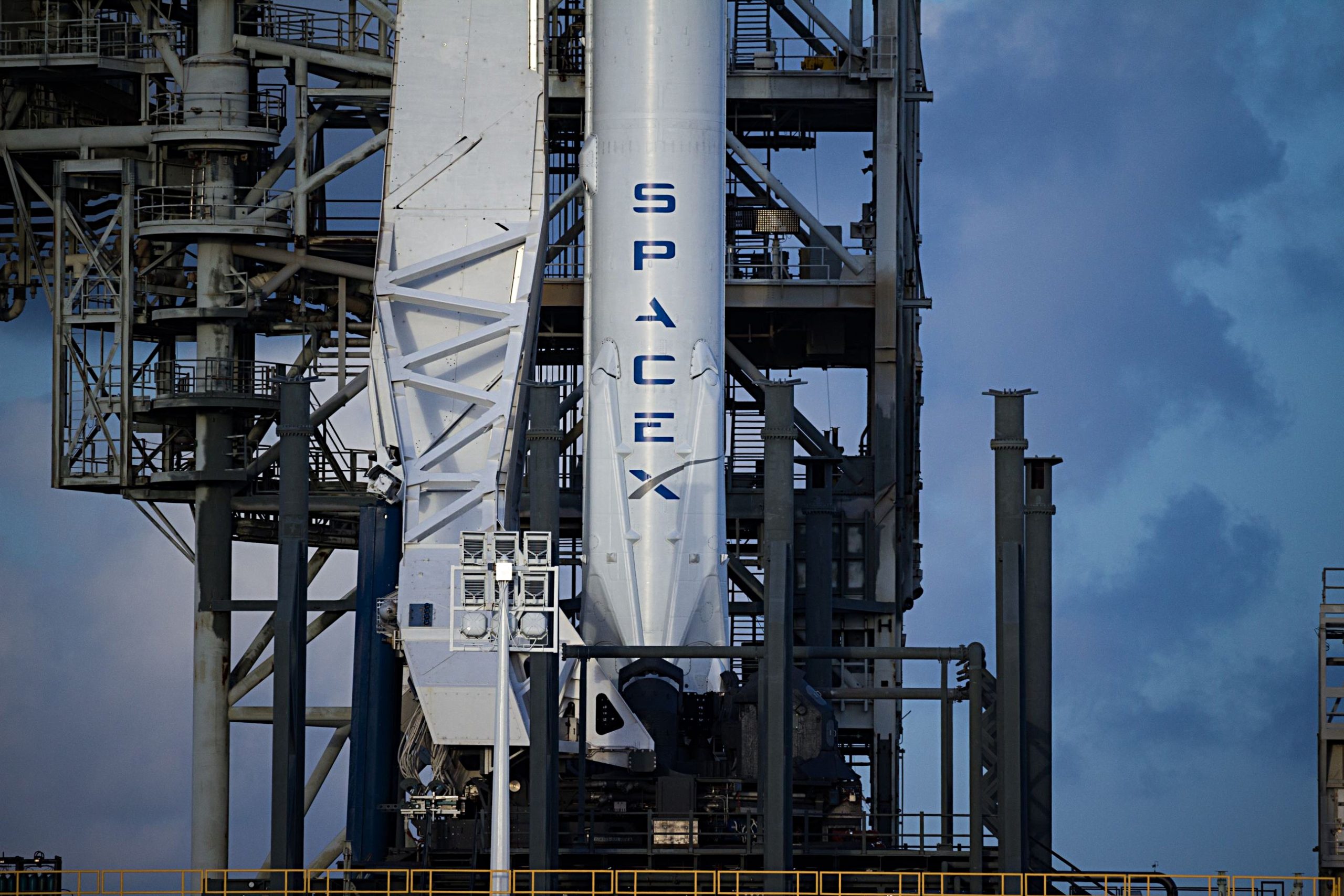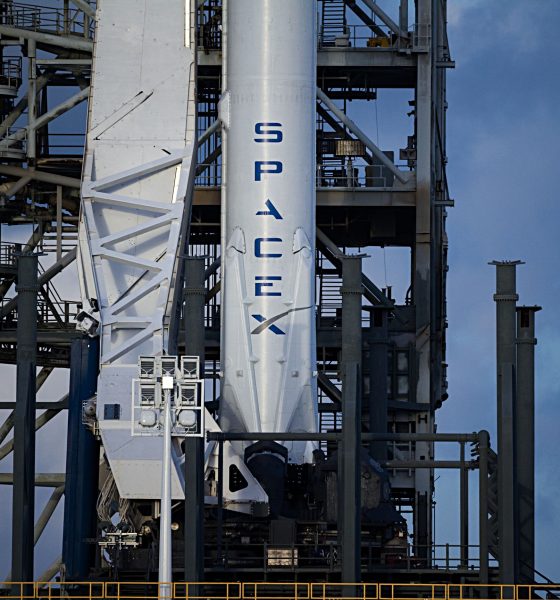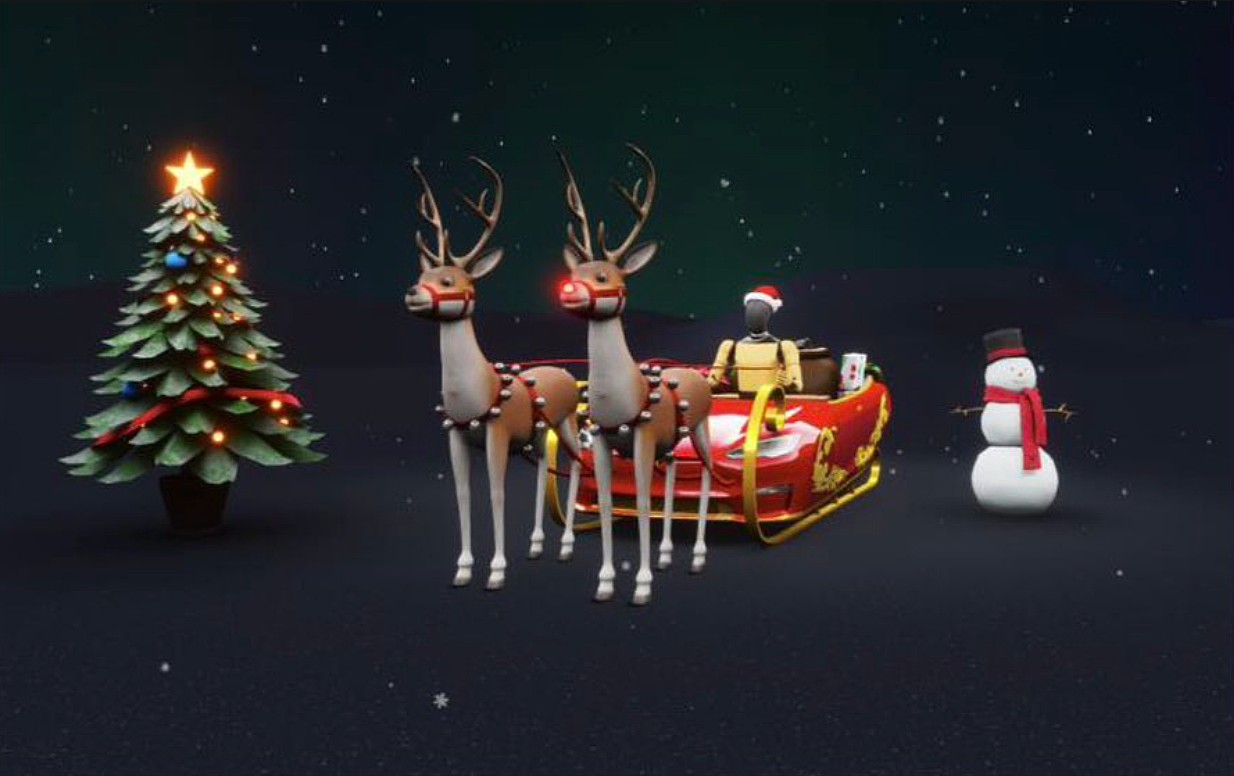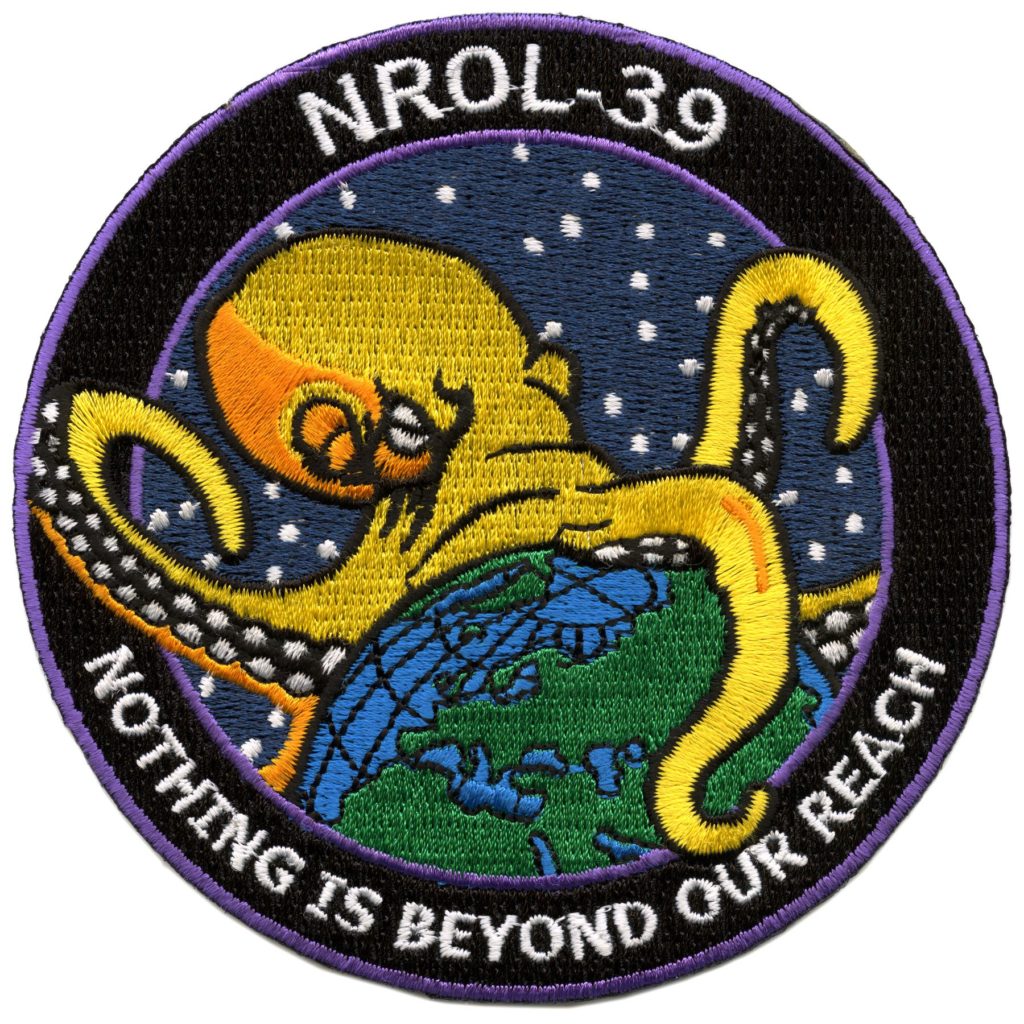

News
SpaceX to launch secret “Zuma” payload same day as Tesla Semi event
SpaceX has completed preparations and is ready to launch the highly secretive “Zuma” satellite(s) at 5pm/8pm PST/EST on Thursday, November 16th, the same day Tesla will be holding its semi-truck unveiling event.
Updated: SpaceX has rescheduled the Zuma mission.
SpaceX's highly secretive mission originally scheduled for today has been rescheduled for 8pm ET Fri., Nov. 17. On-the-ground photos from today – https://t.co/CUHuwP2lT3 pic.twitter.com/TZVBhjTOzw
— TESLARATI (@Teslarati) November 16, 2017
The Zuma launch campaign has been veiled in an extraordinary level of secrecy for SpaceX and the US launch industry in general, and this has piqued the interest of many.
In the last decade or two, the United States military apparatus has launched many dozens of satellites, and secrecy on the order of Zuma is unusual to say the least. Missions for the National Reconnaissance Office (NRO) typically feature some level of media presence and have developed a community of fans in the age of social media, taking advantage of cartoonish mission logos that can often be entertaining, if not vaguely disturbing.
Some of the more ‘unique’ NROL logos in recent years. (NRO)
However, no federal agency has yet to announce involvement in Zuma. The full extent of public information available can be found in a handful of tweets, with drastically less official info available from a leaky source on Reddit. Thus far, Northrop Grumman is known to have at least procured Zuma’s launch from SpaceX, and the same statement indirectly suggested that Zuma was in fact a government-related mission. NRO is the obvious option, with the Air Force or another branch of the US military or intelligence apparatus also a distinct possibility. It is entirely possible that the nature and parent of the mission will remain secret for the indefinite future, even after its launch.
Nevertheless, a handful of details allow us to speculate in greater detail. In May 2017, SpaceX launched NROL-76, a Department of Defense satellite that was intriguingly observed to have made very close passes to the International Space Station, far too close to have been a coincidence. Based on Notices to Airmen (NOTAMs) filed with the FAA and discussed earlier this week, it appears Zuma may be placed in an orbit very similar to that of NROL-76, suggesting that Zuma could be an iteration on NROL-76’s supposed orbit-to-orbit data gathering capabilities. This time, however, agency involvement has been completely shadowed. A blank fairing, sans any NROL-reminiscent logo, will be the tell-tale sign come tomorrow, when Teslarati’s launch photographer Tom Cross arrives at Kennedy Space Center for camera setup.
Northrop Grumman on #SpaceX Zuma launch: "This represents a cost effective approach to space access for government missions. Northrop realizes that this is monumental responsibility and has taken great care to ensure the most affordable and lowest risk scenario for Zuma."
— Robin Seemangal (@nova_road) November 13, 2017
Meanwhile, as has become shockingly routine, SpaceX’s Falcon 9 first stage, core 1043, will conduct a Return to Launch Site (RTLS), landing at LZ-1 just a few miles from its launch pad. Like NROL-76, we can expect live coverage of the second stage and payload to end immediately after stage separation; bittersweet but esoteric fans, but likely to result in a unique focus on the stage returning to Earth.
On the horizon
Possibly more exciting than the launch itself, Zuma is expected to be the last launch from SpaceX’s Kennedy Space Center LC-39A facilities until Falcon Heavy, currently aiming for an inaugural flight around December 29th. After a solid year of repairs and refurbishment, SpaceX’s LC-40 launch pad is anticipating a return to flight operations with the CRS-13 Cargo Dragon mission on December 4th. Located within the Cape Canaveral Air Force Station just a few miles south of LC-39A, LC-40 suffered widespread damage after a Falcon 9 catastrophically failed while preparing for a static fire test on the pad.
Despite the tragic loss of vehicle and the Amos-6 payload, SpaceX has maintained a strong relationship with the owner, Spacecom, and was recently chosen for both a contractual reflight in 2019 and an additional launch in 2020.
SpaceX has also made great strides since returning to flight after Amos-6 in January 2017, and has enjoyed a truly groundbreaking year of incredible progress towards the goal of rapid reusability. Quite fittingly, LC-40 is expected to return to action while hosting yet another commercial reuse of a Falcon 9 first stage, this time with the hugely significant approval of NASA. The space agency has yet to make this decision resoundingly public, but respected industry insider NASASpaceflight.com has stated that it is all but in stone at this point in time. In a sense, the disaster that severely damaged LC-40 acted as a since-heeded wake-up call for SpaceX, and the venerable pad will rise from those ashes into a new era of reusable rocketry, led wholeheartedly by SpaceX.
Be sure to follow our Instagram stories and see live action directly from the launch site at the Kennedy Space Center!

News
Tesla hints at Starlink integration with recent patent
“By employing polymer blends, some examples enable RF transmission from all the modules to satellites and other communication devices both inside and outside the vehicle.”

Tesla hinted at a potential Starlink internet terminal integration within its vehicles in a recent patent, which describes a vehicle roof assembly with integrated radio frequency (RF) transparency.
The patent, which is Pub. No U.S. 2025/0368267 describes a new vehicle roof that is made of RF-transparent polymer materials, allowing and “facilitating clear communication with external devices and satellites.”
Tesla believes that a new vehicle roof design, comprised of different materials than the standard metallic or glass elements used in cars today, would allow the company to integrate modern vehicular technologies, “particularly those requiring radio frequency transmission and reception.
Tesla has recently filed a US patent application on integrating RF transparent materials into the roof structure.
“facilitating clear communication with external devices and satellites”
Tesla fleet is getting @Starlink connectivity integration soon. LFG @Tesla @elonmusk… pic.twitter.com/bLa8YtPLd1
— Chansoo Byeon (@Chansoo) December 9, 2025
Instead of glass or metallic materials, Tesla says vehicles may benefit from high-strength polymer blends, such as Polycarbonate, Acrylonitrile Butadiene Styrene, or Acrylonitrile Styrene Acrylate.
These materials still provide ideal strength metrics for crashworthiness, stiffness for noise, vibration, and harshness control, and are compliant with head impact regulations.
They would also enable better performance with modern technologies, like internet terminals, which need an uninterrupted signal to satellites for maximum reception. Tesla writes in the patent:
“By employing polymer blends, some examples enable RF transmission from all the modules to satellites and other communication devices both inside and outside the vehicle.”

One of the challenges Tesla seems to be aware of with this type of roof design is the fact that it will still have to enable safety and keep that at the forefront of the design. As you can see in the illustration above, Tesla plans to use four layers to increase safety and rigidity, while also combating noise and vibration.
It notes in the patent that disclosed examples still meet the safety requirements outlined in the Federal Motor Vehicle Safety Standards (FMVSS).
Starlink integrated directly into Tesla vehicles would be a considerable advantage for owners. It would come with a handful of distinct advantages.
Initially, the inclusion of Starlink would completely eliminate cellular dead zones, something that is an issue, especially in rural areas. Starlink would provide connectivity in these remote regions and would ensure uninterrupted service during road trips and off-grid adventures.
It could also be a critical addition for Robotaxi, as it is crucial to have solid and reliable connectivity for remote monitoring and fleet management.
Starlink’s growing constellation, thanks to SpaceX’s routine and frequent launch schedule, will provide secure, stable, and reliable internet connectivity for Tesla vehicles.
Although many owners have already mounted Starlink Mini dishes under their glass roofs for a similar experience, it may be integrated directly into Teslas in the coming years, either as an upgrade or a standard feature.
News
Tesla supplements Holiday Update by sneaking in new Full Self-Driving version
It seems Tesla was waiting for the Hardware 4 rollout, as it wanted to also deploy a new Full Self-Driving version to those owners, as it appeared in the release notes for the Holiday Update last night.

Tesla has surprised some owners by sneaking in a new Full Self-Driving version with the wide release of the Holiday Update, which started rolling out to Hardware 4 owners on Friday night.
Tesla has issued a controlled and very slow release pattern with the Holiday Update, which rolls out with Software Version 2025.44.25.5.
For the past two weeks, as it has rolled out to Hardware 3 and older Tesla owners, the company has kept its deployment of the new Software Version relatively controlled.
It seems Tesla was waiting for the Hardware 4 rollout, as it wanted to also deploy a new Full Self-Driving version to those owners, as it appeared in the release notes for the Holiday Update last night.
Tesla Full Self-Driving v14.2.1.25 made its first appearance last night to Hardware 4 owners who are members of the Early Access Program (EAP). It appears to be a slight refinement from FSD v14.2.1, which has been out for a couple of weeks.
Tesla v2025.44.25.5 Holiday update incoming
Also Full Self-Driving v14.2.1.25!!! pic.twitter.com/74D7S0UGXz
— TESLARATI (@Teslarati) December 13, 2025
Many owners welcome the new FSD version, us included, because we’ve been less than impressed with v14.2.1. We have experienced some minor regressions with v14.2.1, especially with Speed Limit recognition, Speed Profile tinkering, and parking performance.
As it stands, Full Self-Driving is still particularly impressive, but Tesla is evidently having an issue with some of the adjustments, as it is still refining some of the performance aspects of the suite. This is expected and normal with some updates, as not all of them are an improvement in all areas; we routinely see some things backtrack every once in a while.
This new FSD version is likely to take care of those things, but it also includes all of the awesome Holiday Update features, which include:
- Grok with Navigation Commands (Beta) – Grok will now add and edit destinations.
- Tesla Photobooth – Take pictures inside your car using the cabin-facing camera
- Dog Mode Live Activity – Check on your four-legged friend on your phone through periodic snapshots taken of the cabin
- Dashcam Viewer Update – Includes new metrics, like steering wheel angle, speed, and more
- Santa Mode – New graphics, trees, and a lock chime
- Light Show Update – Addition of Jingle Rush light show
- Custom Wraps and License Plates – Colorizer now allows you to customize your vehicle even further, with custom patterns, license plates, and tint
- Navigation Improvements – Easier layout and setup
- Supercharger Site Map – Starting at 18 pilot locations, a 3D view of the Supercharger you’re visiting will be available
- Automatic Carpool Lane Routing – Navigation will utilize carpool lanes if enabled
- Phone Left Behind Chime – Your car will now tell you if you left a phone inside
- Charge Limit Per Location – Set a charge limit for each location
- ISS Docking Simulator – New game
- Additional Improvements – Turn off wireless charging pad, Spotify improvements, Rainbow Rave Cave, Lock Sound TRON addition
Tesla also added two other things that were undocumented, like Charging Passport and information on USB drive storage to help with Dashcam.
Cybertruck
Tesla updates Cybertruck owners about key Powershare feature

Tesla is updating Cybertruck owners on its timeline of a massive feature that has yet to ship: Powershare with Powerwall.
Powershare is a bidirectional charging feature exclusive to Cybertruck, which allows the vehicle’s battery to act as a portable power source for homes, appliances, tools, other EVs, and more. It was announced in late 2023 as part of Tesla’s push into vehicle-to-everything energy sharing, and acting as a giant portable charger is the main advantage, as it can provide backup power during outages.
Cybertruck’s Powershare system supports both vehicle-to-load (V2L) and vehicle-to-home (V2H), making it flexible and well-rounded for a variety of applications.
However, even though the feature was promised with Cybertruck, it has yet to be shipped to vehicles. Tesla communicated with owners through email recently regarding Powershare with Powerwall, which essentially has the pickup act as an extended battery.
Powerwall discharge would be prioritized before tapping into the truck’s larger pack.
However, Tesla is still working on getting the feature out to owners, an email said:
“We’re writing to let you know that the Powershare with Powerwall feature is still in development and is now scheduled for release in mid-2026.
This new release date gives us additional time to design and test this feature, ensuring its ability to communicate and optimize energy sharing between your vehicle and many configurations and generations of Powerwall. We are also using this time to develop additional Powershare features that will help us continue to accelerate the world’s transition to sustainable energy.”
Owners have expressed some real disappointment in Tesla’s continuous delays in releasing the feature, as it was expected to be released by late 2024, but now has been pushed back several times to mid-2026, according to the email.
Foundation Series Cybertruck buyers paid extra, expecting the feature to be rolled out with their vehicle upon pickup.
Cybertruck’s Lead Engineer, Wes Morrill, even commented on the holdup:
As a Cybertruck owner who also has Powerwall, I empathize with the disappointed comments.
To their credit, the team has delivered powershare functionality to Cybertruck customers who otherwise have no backup with development of the powershare gateway. As well as those with solar…
— Wes (@wmorrill3) December 12, 2025
He said that “it turned out to be much harder than anticipated to make powershare work seamlessly with existing Powerwalls through existing wall connectors. Two grid-forming devices need to negotiate who will form and who will follow, depending on the state of charge of each, and they need to do this without a network and through multiple generations of hardware, and test and validate this process through rigorous certifications to ensure grid safety.”
It’s nice to see the transparency, but it is justified for some Cybertruck owners to feel like they’ve been bait-and-switched.











